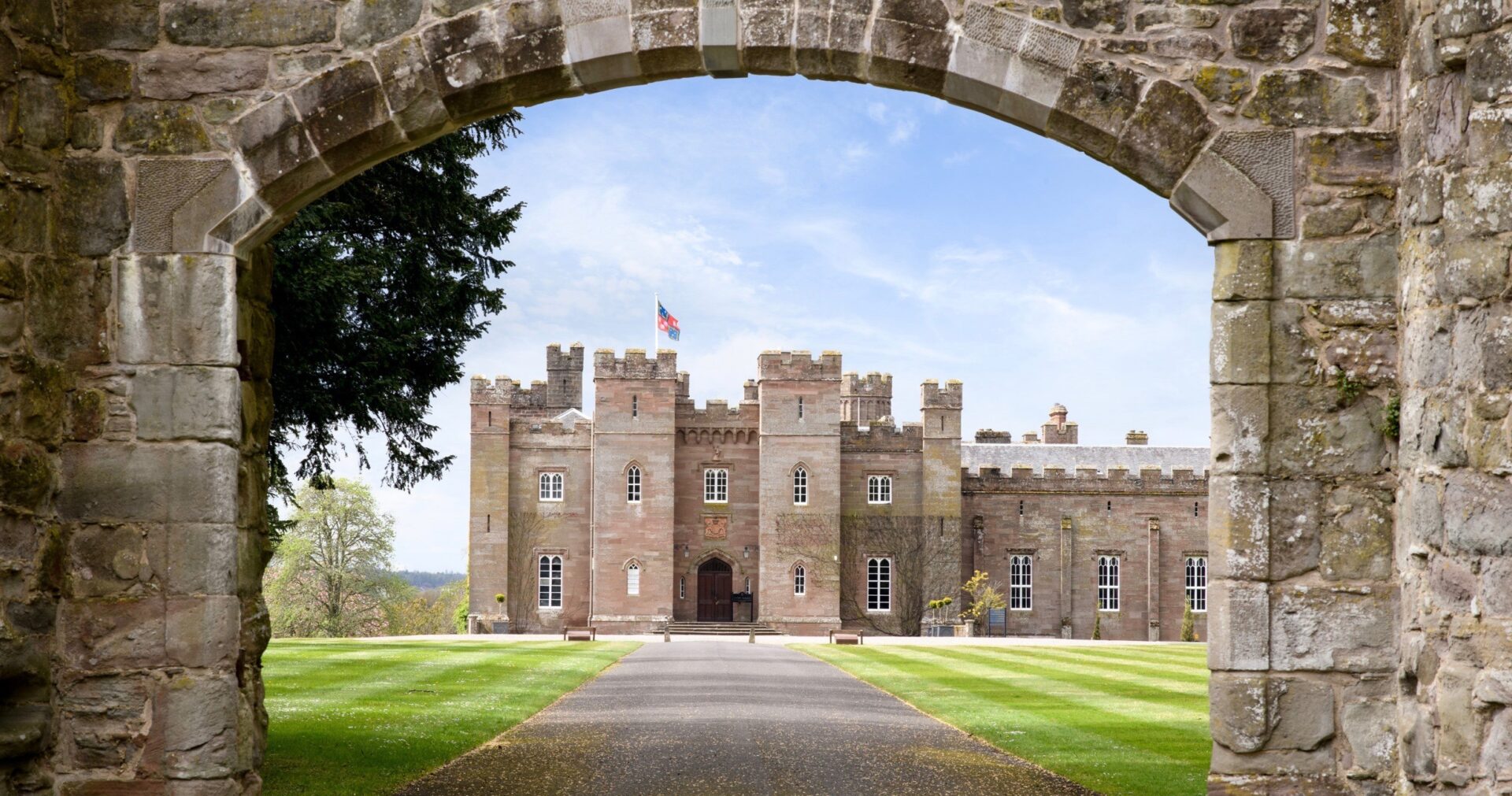The Brazilian novelist Paulo Coelho de Souza once wrote, “In a forest of a thousand trees, no two leaves are alike. And no two journeys along the same path are alike”. That is the beguiling nature of woods and forests, they enchant you but can often deceive you. As you look upon a wood its depth is hidden from view, you see only its facade, and if you look up, you see the tree tops reaching up along the horizon, like a score of music notes playing a melody across the sky.
No two journeys through the parkland up to Scone Palace are the same. Of course the views change from season to season, but the characteristic of the parkland can change multiple times within a single day. Sometimes the parkland and trees can take on a foreboding feeling, especially if dark, ruinous weather is coming in from over the Grampian Mountains in the North. And then a moment later, the clouds will part and the parkland comes alive in the light, radiating a kaleidoscope of colour that only nature can provide.
Trees are an integral part of Scottish culture; Gaelic folktales are full of stories about them. They believed that different species of trees could offer them guidance and spiritual wellbeing. The great oak for example, was believed to give strength, courage and protection. The Scots pine was a symbol of purification and in some cultures, it was believed that the Gods dwelled within them.
Scotland used to be a forest, dominated by Scots pines and ancient oaks. Scotland’s ancient Caledonian forests grew at the end of the last ice age and despite the injuries caused to them by man over time, parts of them still remain with us and are all the more precious for it. But whilst man is the main culprit of the loss of trees on earth, he is not the sole perpetrator, Mother Nature has a hand in it too.
With weather patterns changing as a result of climate change, we are seeing the damage done by storms all too more often these days. On the 26th of November, the Met Office issued a red warning for strong winds across the north of England and Scotland. The storm, which was named Storm Arwen, accumulated wind speeds averaging 69mph with the strongest wind speed of 98mph recorded in Northumberland. It has been described as one of the most damaging storms of the last decade.
Arriving at Scone Palace the morning after Storm Arwen was a jarring and freakish experience. Everything seemed to have been picked up and put back out of place, like a gust of wind had blown a thousand papers from a row of pigeon holes onto the floor at your feet. The paths were covered with scattered debris and branches hang precariously, as though on threads, from the statuesque trees on which they once grew. Perhaps, compared to other estates, Scone got away lightly, only losing seven of its biggest trees, but to see generations of trees lying wounded, battle-beaten on the ground is heart-breaking. But it could have been far worse. During the night, as the wind howled around the Old Stables, one of the resident groundsmen was awoken by an earth-shuddering crash. The converted stables, in which he resides, shook as one of Scone’s oldest and most magnificent pines succumbed and was ripped up in the relentless northerly winds, narrowly missing the medieval wall that surrounds the ancient site of Moot Hill as it fell. You never fully appreciate the nobility of such trees until you walk the full length of one as it lies, lifeless in state.
The gardens at Scone Palace can boast an impressive horticultural lineage. Designed in 1804 by the famous Scottish botanist and author, John Claudius Loudon (1783-1843), they are one of the earliest examples of his work in Britain. He introduced the term ‘arboretum’ into the British language of cultivation and is considered to be the founder of the modern garden, democratising gardening by extolling its pleasures and rewards to all levels of Victorian society.
Although a contemporary of the more widely known landscaper Lancelot Capability Brown, his philosophies on gardening couldn’t have more contrasting. Whilst Capability Brown practised the ‘picturesque’ theory of landscape design, Charles Loudon introduced the concept of a more ‘gardenesque’ approach. In the work of Capability Brown, we see a formalised garden where the natural tendencies of nature have been manipulated and tamed. Trees were strategically placed in groups, standing together in vast swathes of subdued expanses of lawn. Sir Uverdale Price, 1st Baronet and Herefordshire landowner, and another influential contemporary of Loudon once likened Brown’s clumps of trees to, “So many puddings turned out of one common mould”.
Loudon’s ‘gardenesque’ theory saw to embrace the wild and irregular inclinations of nature, but his designs were not entirely devoid of uniformity. Attention was given to the placement of individual plants, ensuring that each one had the best conditions in which it could flourish. Instead of positioning plants and trees in aesthetic arrangements, he would often remove surrounding plants so that the perfect form of each one could be admired and appreciated fully. For Loudon, a garden had to combine instruction and pleasure. At Scone, we see these early principles and beliefs begin to take shape. Old trees that stand where the seedling would naturally have fallen, rugged paths weaving in-between majestic trees and textured slopes offering unexpected views combine to offer an experience that goes beyond the pleasing nature of formalised gardens. Walking through Scone you feel more connected with the beauty of the natural world. In fact, Loudon once said of Capability Brown’s work, “Wherever his levelling hand has appeared, adieu to every natural beauty! I see everything give way to one uniform system of smoothing, levelling and clumping of the most tiresome monotony”.
But perhaps Loudon’s greatest legacy was to ensure that everyone had access and opportunity to enjoy public spaces and gardens. For him, gardening and the appreciation of it did not belong solely to the upper echelons of society. He tried to ensure that everyone had the chance to enjoy plants and learn about them.
Today, the gardens at Scone Palace continue to pay homage to his ethos. A walk through the Victorian Pinetum is both spectacular and instructional, with many species clearly identified and labelled. Near the Pinetum is a Douglas fir that was raised from a seeding bought back from America in 1826. David Douglas, a local man, was born in the village of Scone in 1799 and went on to become a world renowned explorer and plant hunter. After he finished school, he worked as an apprentice at Scone under the head gardener William Beattie for 7 years. Douglas went on to introduce the fir to British cultivation in 1827. In fact, he introduced around 240 species to Britain, including the Grand and Noble Firs, both of which, along with Giant Redwoods, can be found in our historic Pinetum.
And so what does the future hold for our ancient trees in the wake of climate change? There is little doubt that the challenges are great. Generations of trees have lived in harmony with their natural climate, but in recent decades, that climate has turned on them. In the aftermath of Storm Arwen, many forests and estates had to close for essential work, and it will be many weeks more before some of them are able to reopen to the public, as specialist forestry support is in high demand. But this does give landowners the time to reassess and reflect on the future planting of their estates, choosing to replace fallen trees with more hardy species that can withstand these changes in weather patterns. But whilst devastation brings renewed opportunities, it doesn’t detract from the simple fact that, with most ancient trees taking up to 150 years to mature, the skyline has changed irreparably for many, many years to come.
Other News
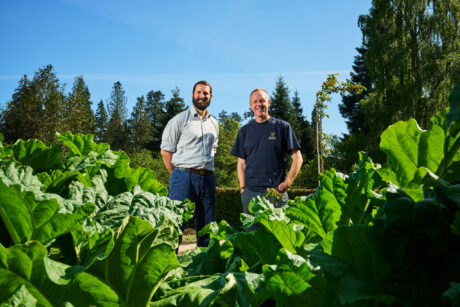
Garden Lovers Invited to Vote in UK First at Scone Palace Garden Fair
14th May 2025
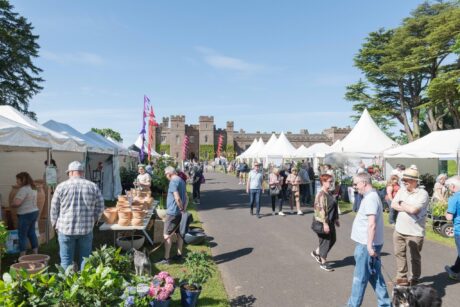
Top Five Must Do Activities at Scone Palace Garden Fair
13th May 2025
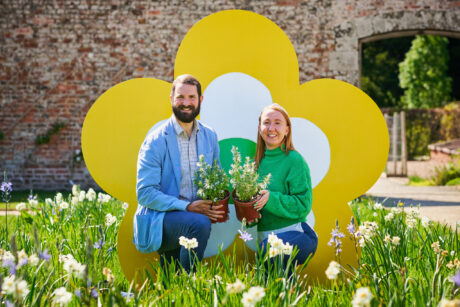
Dobbies Garden Centres Joins the Scone Palace Garden Fair
12th May 2025
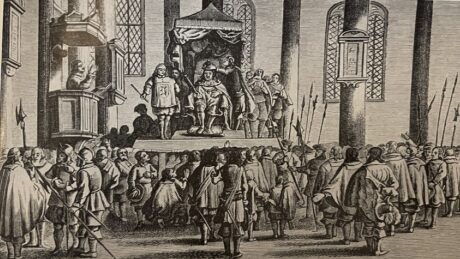
The Crowning Place of Scottish Kings
04th May 2023

The Palace Awaits
29th March 2023

Snowdrop Festival
26th January 2023

Georgina Ballantine’s Giant Catch
14th October 2022

Man's Best Friend
01st September 2022

British Cut Flowers Week & The Garden Fair
05th July 2022

Scotland, Scone and Fashion
01st June 2022
